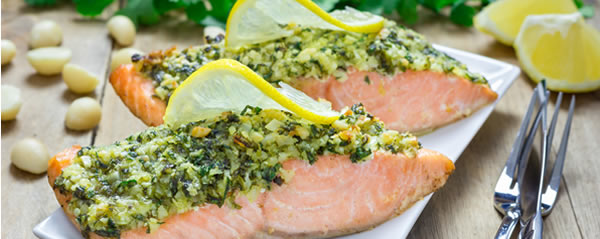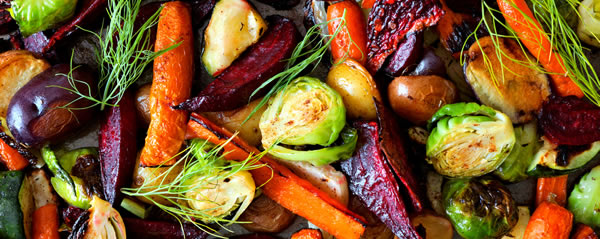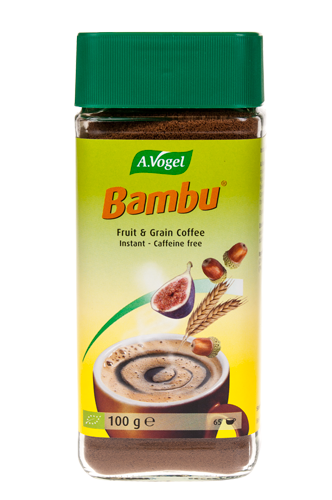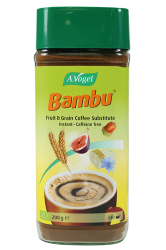1 - Red meat
Whilst red meat isn’t the obvious meat of choice on the big day, we might actually not realise how much red meat we can be tempted by in the lead up to the festivities and even in other courses or sides on the day. Work nights out, meetings with friends and festive lunches whilst people are off work are often in full swing and we can be tempted by all the delicious offerings on hand at this time of year!
Red meat is pretty taxing on the digestive system – it takes more effort to digest and break down, and crucially, we need sufficient stomach acid to achieve this successfully. It’s a common misconception that many of us struggle with too much stomach acid (hence all the commonly prescribed antacid medications), when in fact, low stomach acid is often much more of a prominent problem.
See, we rely on stomach acid to help breakdown the food we eat (especially for more stubborn structures such as protein), to absorb nutrients (especially iron and B12), plus to help keep pathogens at bay (H.Pylori is a common one that can slip through the net). Also, as we age, if we’re stressed or if we’re on certain medications we risk depleting our digestive function further. Recurrent symptoms such as acid reflux are often tell-tale signs that your stomach could do with some extra support.
What’s a realistic swap?

 It’s unrealistic to assume that you won’t be allowing yourself some treats over the festive period but I’m here to help - you can still enjoy yourself whilst making more sensible choices! Red meat can often feature heavily on winter menus in the form of warming stews, broths, pates and terrines. If you’re more conscious of the fact that your sensitive tum may not react too kindly to these heavier options, why not use alternatives such as white meat or fish? These options will be a little lighter on your system.
It’s unrealistic to assume that you won’t be allowing yourself some treats over the festive period but I’m here to help - you can still enjoy yourself whilst making more sensible choices! Red meat can often feature heavily on winter menus in the form of warming stews, broths, pates and terrines. If you’re more conscious of the fact that your sensitive tum may not react too kindly to these heavier options, why not use alternatives such as white meat or fish? These options will be a little lighter on your system.
Supporting your stomach with some bitter herbs such as Yarrow may also be a useful if you’re allowing yourself a little spot of indulgence but are worried about the repercussions. You can use this at the time or on a more ongoing basis for more thorough support.
2 - Potatoes
Roast, mash, dauphinoise or duchess potatoes are often common features on dinner party menus. Unsurprisingly, carb-heavy potatoes glorified with lots of extra fat and dairy doesn’t always sit too well on a more sensitive stomach, and they can be pretty calorific too depending on how they’re prepared.
Also, the thing with white potatoes is that although they contain some vitamin C and fibre (even more with the skin on), they aren’t technically classed as one of your 5-a-day, instead they’re technically classed as more of a carbohydrate than a vegetable.
What’s a realistic swap?

To help you up the nutrient count of your dinner, and to allow you to feel less bagged up, why not consider having a smaller portion of tatties and load up on healthier veggies instead?
Sweet potato is a nice option as it’s one of your 5 a day and with some seasoning, garlic and a sprinkling of herbs it makes for great homemade wedges – rosemary, thyme and paprika also make a delicious combination!
Next, ensure you load up on your greens too. These are especially nutrient and fibre-rich, plus less carb-dense. Brussell sprouts are the obvious choice during the festivities but there’s no harm in including more untraditional varieties such as cabbage, kale, peas, green beans, broccoli, asparagus or some steamed spinach.
3 - Oils
Now, talking about roast potatoes, you might be wondering which fat or oil to use for roasting this year. For years, people have assumed that vegetable oils are the healthier option, but actually, we’re gradually realising that this view might be slightly misleading.
There are a couple of issues with copious vegetable oils; firstly our diets are now too heavy in this type of fat (omega-6) - see balance is always key and we’re losing sight of other types including omega-3, monounsaturated and even saturated fats. Secondly, the quality of many of these oils may be lacking. Harsh processing techniques often let them down and rid the oils of their most beneficial properties.
What’s a realistic swap?

We need fats in our diets – fact. Fats help support the production of hormones and fat metabolism in our bodies, so yes we need some fat to help us stay thin! We just need to aim for a healthier balance, that’s all.
The key when it comes to including fats in our diet is picking good quality oils. Olive oil is a safe bet and even when baking in the oven. Avocado oil, coconut oil (great on potatoes!) and even good quality butter or ghee may also be better options in a bid to get more variety of fatty acids in our diets.
Click my ‘guide to the healthiest cooking oils’ for a more in-depth guide.
4 - Cranberry sauce
Cranberry sauce is traditionally paired with turkey but should we be giving it a re-think?
Whilst cranberries themselves are nutrient-rich and healthy, naturally cranberries are pretty tart in taste so that means we often need to load them up with lots of sugar to help make them more palatable. Next time you’re buying some cranberry sauce, have a quick glance at the ingredients list to get a better idea of exactly what it contains.
What’s a realistic swap?

Did you know that as you start to reduce extra sweetness in your life, your taste buds become accustomed to this and eventually things will start to taste too sweet! This is a good thing and it’s very useful for those of you trying to kick a sugar habit.
So for some of you, you might be wanting an alternative to sickly sweet cranberry sauce anyway, and for others you may just be interested in trying some healthier alternatives. Regardless, my advice would be to try some sort of pickle instead. Fermented foods including pickles and chutneys have really kicked off in popularity this year and for good reason; they’re super healthy! Packed full of nutrient-rich veggies, they have a good content of naturally occurring vitamins and minerals but more importantly they’re good for your gut.
Much like our Molkosan, the lactic acid content of fermented foods helps set the correct internal environment for your gut bacteria to thrive as you eat them. Cleverly, in doing this, the bacteria help convert naturally occurring sugars in the vegetables into their more beneficial, acidic counterparts, so really you’re killing two birds with one stone when swapping them into your diet; less sugar, more of the good stuff!
5 - Alcohol
For many the festive period is a time to relax, and quite rightly so. It’s a time to be merry and catch up with friends and family so it may be unrealistic to say you’ll go completely tee-total, if this isn’t something you’re used to.
However, perhaps it’s time to put a little more thought into what and how you’re drinking, and there might be room for some subtle changes.
What’s a realistic swap?

Whilst sickly sweet or creamy, boozy tipples may be on the cards to fit in with the festive theme, you might want to give some of those a miss for something a little less fussy.
Interestingly, I’ve recently discussed in one of my blogs how regardless of the type, alcohol should never be considered as a healthy addition to our diets. However, we can perhaps feel slightly less guilty about including some alcohol if it’s done in a certain way for example, in moderation alongside meals, or by opting for red wine over cheaper options or those with questionable mixers. You’re more likely to get a dose of antioxidants this way, rather than something much less attractive like some artificial sweeteners.
Click the link to read more on this boozy debate!
6 - Coffee
Coffee is a popular after-dinner beverage and some may find they crave one in the morning if a stressful, full-on day lies ahead.
However, I’ve recently explored in detail why coffee may not be the best drink of choice for a magnitude of reasons. It could for example, be scuppering any weight loss efforts you’ve made recently, plus it’s pretty effective at ramping up your stress and anxiety levels. So, if you’re prone to these feelings anyway, or are struggling to shifts a few pounds, you may want to rethink that caffeine hit.
What’s a realistic swap?

 Many of us have heard about the benefits of herbal teas but haven’t taken the leap and tried it yet so the New Year could be the time to do just this.
Many of us have heard about the benefits of herbal teas but haven’t taken the leap and tried it yet so the New Year could be the time to do just this.
However, if making such a big switch just doesn’t sound feasible, why not try substituting a few of your cuppas with a coffee alternative such as Bambu so you still experience the taste? Also, if you’re a tea fan too, this may make a slightly better option. Tea generally doesn’t have quite the same caffeine hit as coffee and therefore is a little gentler on your various systems – from nervous to digestive!
7 – Crisps
Now I’m not all about calories – calorie-based fad diets don’t tend to work in long term, and from my point of view it’s much more important to be considering exactly what you’re putting in your body, rather than it’s calorific content. This will not only allow for a healthier you, but luckily, processed foods just happen to generally be lower in calories too – bonus, and without all the effort.
When it comes to crisps, they just so happen to be pretty calorific, but the calories they contain aren’t good quality, which is the biggest issue. To make crisps, potatoes are fried at high temperatures using cheaper quality vegetable oils, the very stuff we’ve just talked about trying to reduce our intake of. The high temperature cooking of starchy foods such as potatoes risks converting simple sugars into more noxious substances such as acrylamide which is something you certainly don’t want to be loading up on if you can help.
What’s a realistic swap?

Whilst nuts aren’t a low-cal option – that’s ok! See, it’s not all about calories, even if you’re trying to manage your weight. Nuts are nutritious and rich in good quality protein and fats which will help to keep you satisfied for longer. That’s unlike the dangerous combination of fat and carbs that crisps contain that seem to leave us wanting for more!
When it comes to nuts, opt for unsalted varieties where possible but roasting them gently at home with some spices and a little pinch of seasoning can make for a pretty indulgent, yet healthy snack – you can even try it with different wholefoods such as chickpeas or beans too – delicious!





 Looking for our products in a store near you?
Looking for our products in a store near you?


